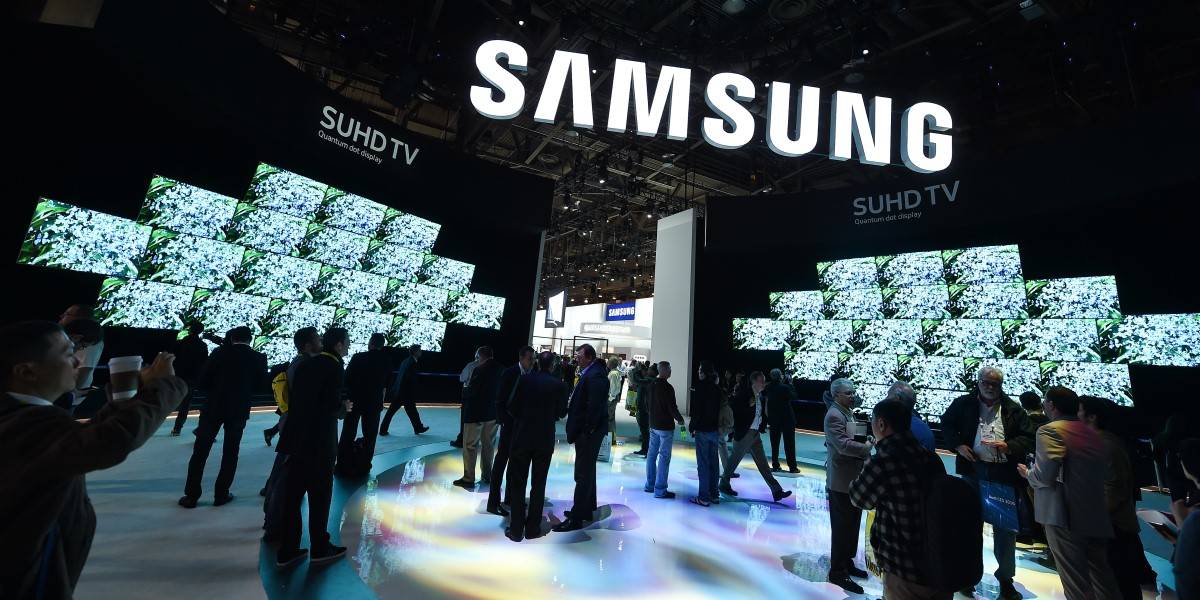Samsung Profits And Sales Slump, Hopes For A Jump Start From Cars

Samsung Electronics has posted nasty Q4 results and suggested that premium products and a surging foundry business are its way out of a slump.
The chaebol reported its lowest quarterly operating profit since 2014: ₩4.3 trillion ($3.4 billion). The 69 percent year-on-year drop was accompanied by an eight percent year-on-year drop in revenue to ₩70.5 trillion ($57.3 billion).
The unpleasant numbers were not unexpected. In early January, Samsung released guidance and preliminary figures that warned investors to expect less than stellar results.
Samsung's results report makes several mentions of "inventory adjustments" – a polite way of saying economic conditions mean its customers plan to build less stuff using Samsung components.
Server-makers are among those making such adjustments.
"For DRAM, demand for server was limited as Set build declined because of economic uncertainty and customers' stance on inventory reduction remained. Mobile and PC demand was weak because of major customers' continued inventory adjustments and Set build reduction. But the Company expanded the portion of cutting-edge nodes by optimizing its product portfolio and actively responded to the demand for high-density products focusing on major datacenters and server OEM customers," explained Samsung. "For NAND, demand for server SSD was somewhat stagnant because of customers' inventory adjustments."
"In 2023, based on cost competitiveness, the Memory Business plans to expand the proportion of high-value-added products by addressing the demand for high-density server SSDs, respond to the high-density trend of smartphones and PC and strengthen its market leadership," predicted Samsung.
Mobile panels also predictably fell as global demand for smartphones fell to lows not seen in a decade.
- Phone the rich: Premium handsets sole survivors of slump in India, China
- Time to buy a phone as shops use discounts to clear out inventories
- Yeehaw, y'all! Texas done got itself a honkin' new Samsung semiconductor plant
- You there, boffins and tech giants, take this $50m and figure out better chips
The Foundry Business bucked the downward trend and posted a new record for quarterly revenue. The chaebol did not disclose a precise figure, but did attribute it to the expansion of advanced node capacity and a diversification of customers and applications.
The company announced [PDF] it will increase foundry orders in 2023 for the 3nm 2nd generation GAA process and focus on the development of the next-gen 2nm process while diversifying into automotive chips.
The 3nm first-generation process is currently being mass-produced with a stable yield, Samsung stated, adding that the 3nm second-generation process is "progressing rapidly."
The chaebol also said it had started developing 4nm for automotive, and its automotive system-on-chip (SoC) business had "solidified its mid- to long-term growth base" by supplying scheduled samples to a European premium OEM, and securing an MOU for autonomous driving products in the US.
Samsung's not a major SoC player, so those wins are significant.
Going premium appeared to be Samsung’s solution to many of its woes. For semiconductors, the company said it would focus on "the demand for high-end products, such as DDR5, LPDDR5x and 200 megapixel (MP) image sensors amid a weak memory market and soft global IT demand."
The tech kraken also said it would cater to the premium segment when it came to smartphones with the launch of Galaxy S23, digital appliances through its BESPOKE Infinite Line, in its Device eXperience (DX) Division and memory too.
The struggling giant continues to invest in the business segment. Out of ₩53.1 trillion ($56.7 billion) capital expenditure in 2022, ₩47.9 trillion (51.1 billion) went to semiconductors.
Large panels "narrowed" its losses as QD-OLEDs increased and LCD inventory was depleted.
Capital expenditure on memory in 2022 was concentrated on P3 and P4 infrastructure to prepare for mid- to long-term bit supply and extreme ultraviolet (EUV) technology. Its foundry investments were focused on Pyeongtaek advanced node production capacity and developing the infrastructure of a brand new Taylor, Texas facility.
While Q4 was a nasty one for Samsung Electronics, its full year delivered a record ₩302.23 trillion ($245 billion) revenue and ₩43 trillion profit ($35.3 billion). ®
From Chip War To Cloud War: The Next Frontier In Global Tech Competition
The global chip war, characterized by intense competition among nations and corporations for supremacy in semiconductor ... Read more
The High Stakes Of Tech Regulation: Security Risks And Market Dynamics
The influence of tech giants in the global economy continues to grow, raising crucial questions about how to balance sec... Read more
The Tyranny Of Instagram Interiors: Why It's Time To Break Free From Algorithm-Driven Aesthetics
Instagram has become a dominant force in shaping interior design trends, offering a seemingly endless stream of inspirat... Read more
The Data Crunch In AI: Strategies For Sustainability
Exploring solutions to the imminent exhaustion of internet data for AI training.As the artificial intelligence (AI) indu... Read more
Google Abandons Four-Year Effort To Remove Cookies From Chrome Browser
After four years of dedicated effort, Google has decided to abandon its plan to remove third-party cookies from its Chro... Read more
LinkedIn Embraces AI And Gamification To Drive User Engagement And Revenue
In an effort to tackle slowing revenue growth and enhance user engagement, LinkedIn is turning to artificial intelligenc... Read more

